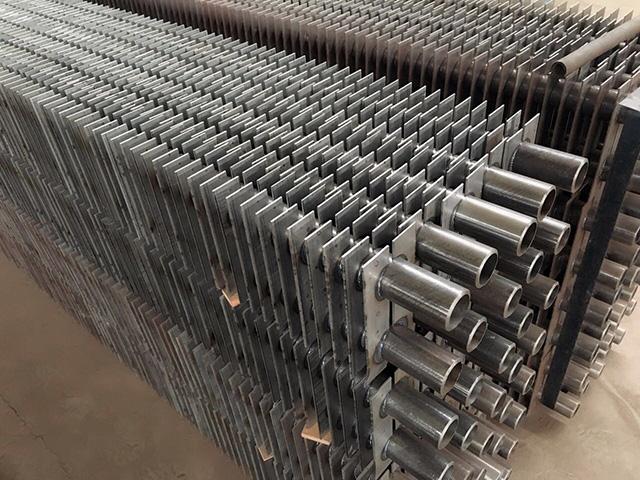What are the rectangular Finned Tubes?
Rectangular finned tubes are heat transfer components that are used in various industries such as power generation, chemical processing, and HVAC systems. They are designed to increase the surface area of a heat transfer system, thereby enhancing its heat transfer efficiency.
Rectangular finned tubess fins attached to the tube are rectangular in shape, while the tube itself can have various shapes, such as circular or square.
Rectangular fins are often used in rectangular finned tubes because they can provide a larger surface area for heat transfer compared to other fin shapes, such as circular or triangular fins. This increased surface area can lead to higher heat transfer rates and improved efficiency of the heat transfer system.
The fins are typically attached to the outer surface of the tube using methods such as brazing or welding. The spacing between the fins and their thickness can also be adjusted to optimize the heat transfer performance for a particular application. Rectangular finned tubes are commonly used in air-cooled heat exchangers, where the fins help to increase the heat transfer rate between the hot fluid being cooled and the surrounding air.
The fins increase the surface area of the tube and thus improve the heat transfer between the fluid flowing inside the tube and the surrounding environment. The rectangular shape of the tube provides a larger surface area for fin attachment and makes it easier to install and maintain the finned tube.
These finned tubes are commonly made from materials such as copper, aluminum, or stainless steel, depending on the application and the fluid being transferred. They are often used in heat exchangers, boilers, and air-cooled heat exchangers, among other applications.
The design of rectangular finned tubes depends on various factors such as the heat transfer rate required, the fluid flow rate, and the operating temperature and pressure. The fins can be of different shapes, sizes, and materials to optimize their performance in a particular application.

Comments
Post a Comment